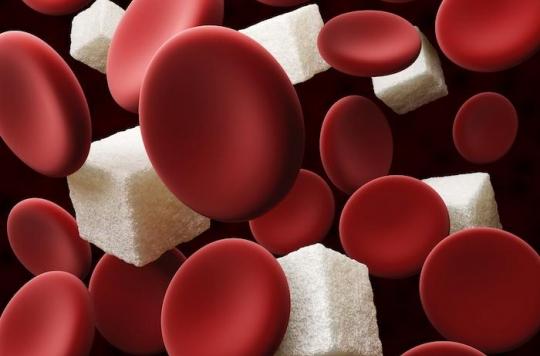Fatigue or cravings is quite simply a well-known medical phenomenon: hypoglycemia.

Whether it is called by that name or like sportsmen, craving is quite simply a well-known medical phenomenon: hypoglycemia, that is to say a level of sugar that is too low in the blood.
Almost everyone has suffered, or will suffer in their lifetime, from hypoglycemia. Fortunately, not in its major form, as it is an extremely unpleasant sensation and, what’s more, sometimes dangerous.
Our brain is a very large consumer of energy, and therefore of sugar. This is easy to understand when you think about the enormity of the tasks that it has to manage to make our body function. What is more, the body considers it, rightly, as a priority … Also, as soon as it feels that the fuel is going to run out dangerously, it will be the first to express its dissatisfaction. Rather violently… By secreting hormones, not particularly cool, adrenaline and noradrenaline, which are stress hormones. They are responsible for preparing the body for danger
In the case of sudden changes, hypoglycemia, it is the same process that occurs: these hormones prepare the brain for the worst …
If nothing is done, the cascade of reactions is impressive:
- It is first of all the mood which manifests itself by a feeling of unexplained anger and a brutally maladaptive behavior.
- The “haze” begins to invade the brain: we feel unable to think, reason or concentrate on a simple thing.
- The reaction functions begin to deteriorate: speech becomes difficult, walking impossible.
At this stage, it is urgent to sit down and act if you are able, that is to say, eat sugar.
The entourage, fortunately, realized that something abnormal was going on, especially as the hypoglycemic one looks like someone who would have been brought down in the cage with the wild animals, which does not This is not necessarily a bad comparison, since these hormones are the ones that prepare the body for danger: sweat, tremors, dizziness, pallor, are there to show the state of discomfort.
It is in the event of non-reaction (fortunately, the feeling of hunger is there to guide the diagnosis a bit) that the rest of the story can become dramatic. Profound hypoglycemia can be complicated by fainting, then epileptic seizures and coma.
What to do ?
Diabetics, who know this sensation well, always have a piece of sugar with them. It can be a good solution for those who are going to discover the joys of physical exercise, while eating a little less. I would add the relief piece of bread, when you know that the session will be longer than an hour.
If the pump stroke occurs outside of the context of physical activity, and if it is in the home setting, it is smart to plan the antidote. Surimi sticks even seem to have been invented for this. Those who don’t like the taste of fish may have slices of turkey or chicken fillet on hand, which are easy to eat and not much fatter than fish.
At worst, if you’ve waited too long, there’s the magical piece of sugar left. Avoid, as is often advised, the handful of dried fruits or nuts; or even a whole series of biscuits, drinks, anti-pumping pasta, which are no better than a piece of bread, but not particularly cheap. After the unpleasant sensation, you should quickly eat one of the foods mentioned above.
Numbers :
The normal sugar level in the blood.
It is measured with a very simple test called blood sugar:
- Under 1 gram 10 per liter, you can rest easy.
- Between 1.10 and 1.25 g, this is called a pre-diabetic condition which should be checked carefully.
- Above 1 gram 25, this is diabetes.
You have to be on an empty stomach for this blood test, because, of course, the sugar that you eat interferes with the results; just like physical exercise in the other direction. It is also a classic for those who want a normal blood test. A lot to spend in the hours which preceded… However, all this is not possible any more with a new indicator of our blood, HB1C, also sometimes called glycated hemoglobin. It provides information on the average level of sugar that has been in the blood for 3 months when blood sugar is only a one-off measurement, once at a given time, and that the cheater can occasionally lower by putting himself on an empty stomach two days before the exam or while doing a lot of sport. To put it simply: blood sugar is the picture; HB1C, the movie.
What are the normal values ?
- ebetween 4 and 6.
- We are diabetic above 7 …
In practice, the symptoms of hypoglycemia appear below 0.60 or even 0.80 grams per liter.
.

















